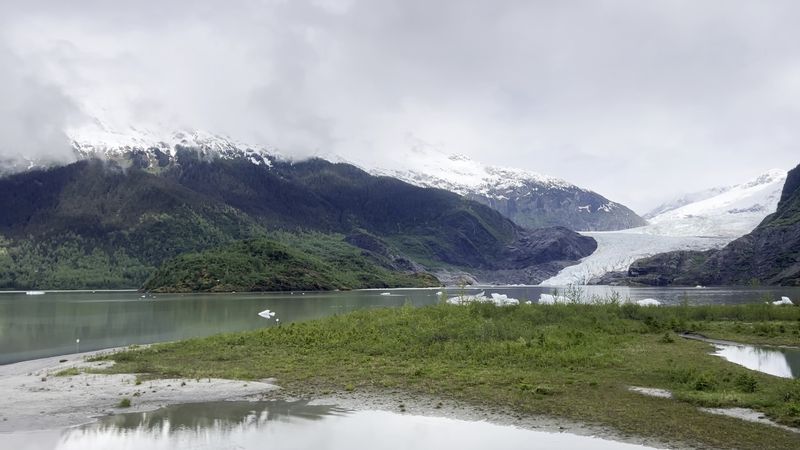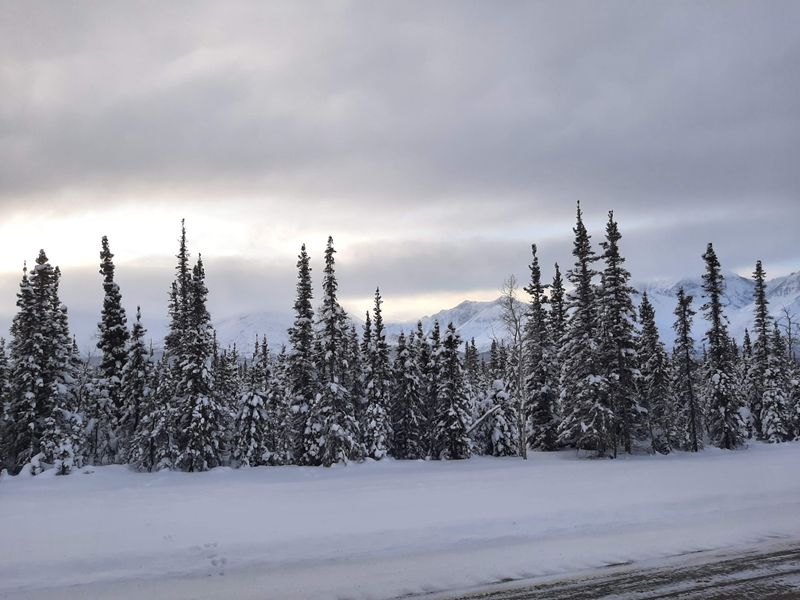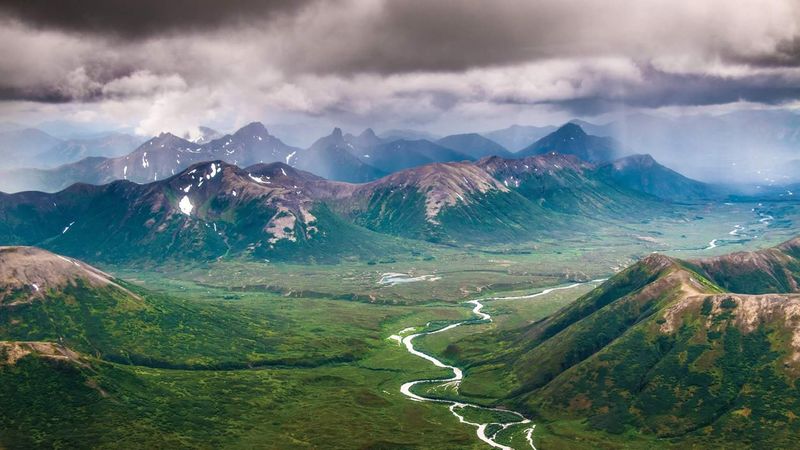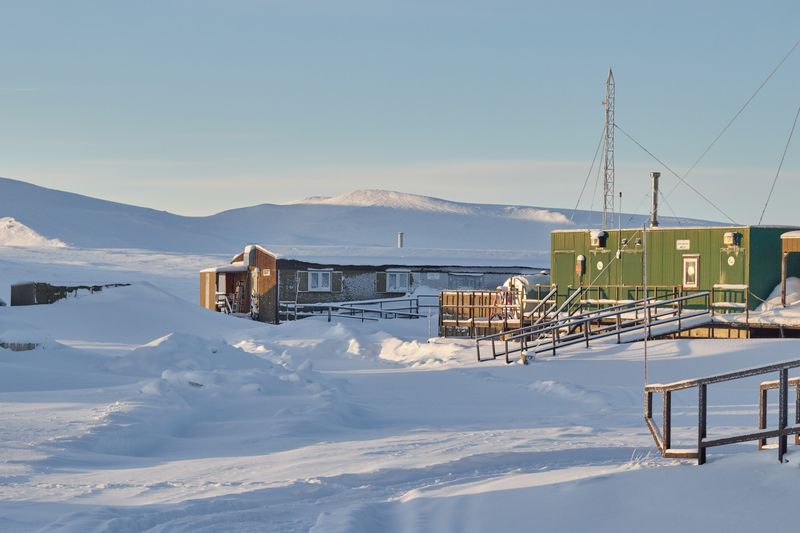Alaska hides stories in ice that you can actually see, touch, and walk beside. As glaciers retreat and permafrost thaws, they reveal tree stumps with bark intact and forest beds sealed away for millennia. It feels like stepping into a time capsule where the Ice Age meets your hiking boots. Ready to chase the past across blue ice, wind-swept valleys, and silent yedoma cliffs?
1. Mendenhall Glacier – Juneau
Walk the trail toward the ice and you might spot tree stumps still rooted in ancient soil, bark clinging like it never left. Guides point out rings you can count with your fingers, a quiet way to feel centuries slide under your breath. The glacier’s blue wall frames it all like a window into a forest that once hummed with birds.
As summer warms the valley, more wood emerges from meltwater streams and gravel bars. You can follow dated retreat markers to see how fast the ice has pulled back. It is humbling to meet a forest that outwaited time.
2. Exit Glacier – Kenai Fjords National Park
Exit Glacier is a front row seat to change you can measure with your steps. Trail signs mark where the ice stood decades ago, and now you find gravelly ground, woody debris, and young plants staking claims. Beneath your boots is soil that last saw sunlight in medieval times.
Stick to marked paths and you will catch glimpses of buried wood in outwash fans. Rangers explain how microbes wake up when the ice retreats, recycling an old forest into a new one. You leave with dates in your head and the feel of history underfoot.
3. Yukon River Lowlands
Along sweeping bends of the Yukon, thaw slumps peel back time like old wallpaper. Logs and stumps slide out of banks, their fibers surprisingly tight after thousands of years. You hear the river and realize it is also an archivist, cataloging eras in muddy shelves.
Local boaters sometimes spot carved driftwood that never touched a modern saw. Scientists date some pieces to Ice Age cold snaps and warmer pulses. If you go, travel with experienced guides and respect fast water and unstable shores.
4. Tanana Valley – Interior Alaska
Drive near Fairbanks and the Tanana Valley tells a deep-time story in silt and ice. Permafrost bluffs and cutbanks expose dark organic layers where ancient forest litter slept for ages. Archaeologists and botanists sift these bands to trace climate swings leaf by leaf.
You can view roadcuts and riverbanks that reveal roots and woody fragments within loess. It feels like someone paused a forest mid-fall and stored it in cold storage. Bring curiosity and patience, because the details hide in fine grains.
5. Goldstream Valley – Fairbanks
Goldstream is famous for Ice Age fossils, but the ground also hides mat after mat of old forest litter. Mining cuts and natural exposures reveal woody layers preserved by permafrost. It is a place where moose tracks cross yesterday and ten thousand yesterdays.
On a cool morning you can smell damp silt and spruce, a strange blend of fresh and ancient. Watch for research sites and respect closures. The story here lives in thin bands of dark earth that crumble if touched.
6. Glenn Highway Pull-Offs – Between Anchorage and Glennallen
Those highway viewpoints are more than photo stops. Look across braided rivers toward dusty moraines and you are staring at old forest floors emerging from ice. In late summer, melt channels sometimes spit out sunburned logs with tight growth rings.
Bring binoculars to scan gravel bars and lateral moraines. Locals swap stories of wood appearing after hot weeks, only to vanish downstream by fall. The drive becomes a rolling museum if you slow down and look.
7. Colville River Basin – North Slope
Up on the North Slope, the Colville’s bluffs cut into yedoma that entombs plant fragments and ancient wood. The cliffs weep with thaw and drop chunks that smell faintly of peat. Some layers trace back thirty thousand years or more.
Researchers helicopter in, but you can learn from public reports and exhibits. The scale is Arctic grand, all big sky and quiet science. Standing on the tundra, you feel the ground breathing out its history.
8. Togiak National Wildlife Refuge – Southwest Alaska
Togiak’s wild valleys hold permafrost pockets that keep old tundra and forest remains intact. Remote creeks nip at banks and uncover woody mats like rolled carpets. It is a refuge for salmon and secrets both.
If you paddle or fly in, you might spot drifted logs that predate written history. The landscape feels young and ancient in the same breath. Leave no trace and let the wind do the narration.
9. Bering Land Bridge Preserve – Seward Peninsula
Here the ground remembers when Alaska shook hands with Asia. Permafrost locks in plant remains from Ice Age steppe and scattered forest patches. As thaw nibbles the edges, you get glimpses of a corridor that once carried people and animals.
Hike the tundra and you will notice low mounds and wet hollows where yedoma softens. The silence holds a borderless feeling. It is easy to imagine mammoth silhouettes against the horizon as you walk.
10. Kobuk Valley National Park
Sand dunes meet permafrost here, and that contrast brings surprises. Seasonal thaw and river cuts sometimes uncover ancient wood tucked under dune edges and glacial deposits. Caribou trails stitch through a landscape that keeps editing itself.
From the dunes you can scan for riverbanks where dark, woody layers peek out. Rangers can point you toward safe viewpoints. The mix of gold sand and old peat is unforgettable under clear fall skies.
11. Toolik Field Station – North Slope Research Area
At Toolik, scientists track how thaw frees long buried vegetation and changes streams. You can feel the pulse of research in every flagged plot and sensor tower. Old roots surface along cutbanks like the Earth whispering data.
Visitors on approved tours learn how carbon moves when permafrost softens. The station sits in big country where lakes glitter and silence carries far. You leave hearing the click of instruments and the quiet weight of time.















